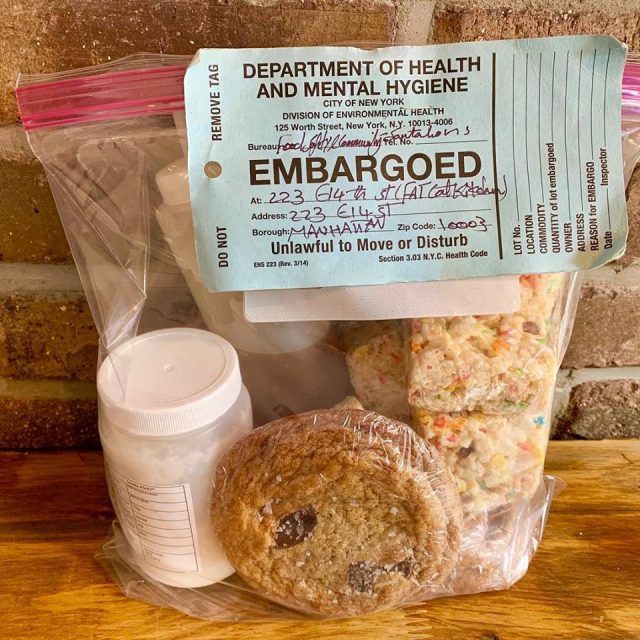For my adventure in backyard smoking, I figured some advice was in order. So I turned to a man who knows meat like Dionysus knew wine, Mr. Cutlets, the author of The Hamburger: A History, better known to Web-trolling eaters as Feedbag blogger Josh Ozersky. A devout student of the art of marrying hardwood smoke and animal parts, Josh took on a sober tone as I told him I planned to smoke pork butt (a section of the shoulder, which is often labeled as the latter in the supermarket) in a humble kettle grill.
“It can be done, and I’ve done it,” he said. “But it’s no easy task.”
The trick, he explained, is that when you use a covered grill instead of a more elaborate “offset” smoker— which houses the fire in a separate compartment from the meat—the only way to refuel the fire is to lift the lid, remove the grill and its weighty contents, add coals and wood chunks, and put everything back. (Though some Webers, he noted, have a hinge in the bowl that allows you to sidestep this.) Given the need to do this every 45 minutes or so, halting the cooking and cooling the cooking chamber, it’s no small setback when you’re cooking a large piece of meat at low temperature. It’s like taking a long bike ride where you have to stop and change a tire every 25 minutes.
To improve things, he said, it helps to have a second station for preparing coals, so you can light some in the chimney and get them ready for adding, instead of adding cold coals. A patch of dirt on the ground will suffice, he said, though I have a second grill, salvaged from the street on garbage day, that served the purpose. (I should add that by coals here I mean hardwood charcoal, rather than briquettes. You can use the latter, but if you do it’s even more important to light them and get them gray and glowing before adding them, so you’re not giving the meat a bath in chemical briquette fumes.)

Figure an hour to 1:15 per pound, Josh advised, so at 10 a.m. I was rinsing the pork butts, removing the skin and exterior fat, and coating them liberally with a dry rub consisting of a non-scientific mix of salt, pepper, sugar, garlic powder, paprika and chili powder. I built a small fire at one end of the grill, laid on a couple hickory chunks, put the pork on the grill at the end opposite the fire, closed the lid and opened the vents halfway, and watched as a satisfying plume of smoke wafted from the top.

From there, I added another handful of coals every 45 minutes or an hour, lighting and stoking them in advance every other time. A couple small chunks of hickory went on with each refueling. (Chips work well for this, but chunks will smolder longer, so I used the latter, splitting large chunks into smaller ones with a hammer and chisel.)
In the hours to follow, I learned something about why barbecue is traditionally a southern specialty. The laid-back quality that comes in part from weathering 100-degree summers is much better suited to barbecuing’s slow-and-low approach than the high metabolism of a neurotic Northeasterner. Instead of chilling under a tree with a feedcap over my eyes, I was obsessing over what was and wasn’t happening under the grill’s blue cover. Was my fire going out? Was it too hot? Was it not hot enough? Are those things actually cooking in there? Trusting that the long, slow alchemy at work is going to produce something edible requires a certain amount of faith, and when you have ten guests due in a matter of hours it can provoke some anxiety. (An internal temperature gauge would go a ways toward calming such anxiety, though my bare-bones $50 grill lacks one. It occurred to me late in the game that a simple oven thermometer placed next to the meat would clue me in to whether I was getting close to the desired temperature of around 250, and next time maybe I’ll try this.)

Ultimately, though, the heat and smoke did its work, though Josh’s warnings were on target—after a full seven hours of smoking, the butts were beautifully blackened, but the internal temperature was around 165, instead of the desired 180-195 (depending on whom you ask). So while I made hot dogs for the kids and saw to other tasks, they spent an hour in a 300-degree oven. (Which, I’m glad to say, failed to bring on any purist derision from Mr. Cutlets, who pronounced his rule as, “Do whatever you have to do.”)
Truth be told, any barbecue-competition judge would have noted that my pork hadn’t quite reached the falling-apart tenderness that long, slow cooking ought to produce. Another hour or two would have helped. (I suspect also that a Weber grill, whose deceptively simple bowl shape has certain magical heat-circulating properties, would have served me better than my cheaper, flatter number, an opinion seconded by Mr. Cutlets.) But it was pretty damn good nonetheless, and the enthusiasm of my guests, none of whom were competition judges, was vocal and seemingly heartfelt. (This includes, by the way, high praise from Mike, freshly arrived after an overnight drive from his native Owensboro, Ky., a town that considers itself something of a barbecue capital.) So, score one for home smoking. Next time: an earlier start, some kind of temperature gauge and maybe a Xanax.
Leave a Reply



